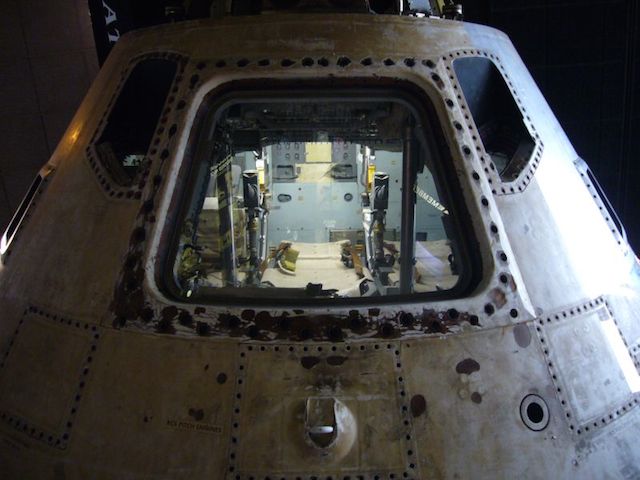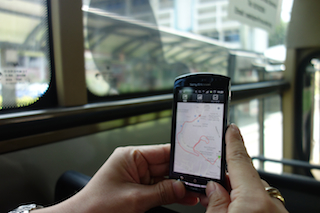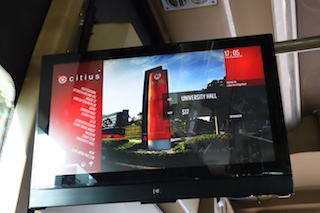
プローブ情報システム
自動車が産み出す"ビッグデータ"
プローブ情報システムは、自動車の持つセンサーデータ(プローブデータ)を、情報通信基盤を用いて収集し、統計的な処理などを施すことで、交通情報や気象情報、安全運転支援情報などの価値ある情報(プローブ情報)の生成・提供を実現するITS(Intelligent Transport Systems)の1分野です。現在の自動車は、安全かつ効率的な走行を目指して高度化が進んだ結果、「動くコンピュータ」としての側面を持っており、道路状況や周辺環境、車両の状態などを常に把握しています。こうした情報を集約・共有して利用ことが出来れば、道路交通問題の解決手段として極めて有効です。また同時に、欧米で普及が進んでいたNomadic DeviceやPND(Portable Navigation Device)などの可搬型の端末によるナビゲーションは、スマートフォンやタブレットといったITモバイル機器との融合が進み、自動車の位置と移動を扱う情報環境は急速に発展が進んでいます。今やプローブ情報システムは、ITSの目標である道路交通分野だけに留まらず、自動車が産み出すビッグデータとして、ITSとITの双方の分野においてサービスイノベーションや情報通信社会を支える役割が期待されているのです。
Probe Vehile System
Probe vehicle system has become a new trend for service deployment of ITS (Intelligent Transport Systems) to enhance Car Tele-matics. Furthermore, Shifts in devices that does not need to be fixed equipment inside vehicles, such as PND (Portable Navigation Device) or Smart-phones as probe information system have become a new focus on Vehicular activity sharing infrastructure. Using smart-phones as probe information system enhances possibility to create a mobility aware service platforms not limited only to vehicles, but to any activities related with mobility, relying on massive innovation not only limit to ITS.

インターネットITS
ITとITSの融合
日本でのインターネットと自動車に関する研究開発は、1990年代後半から産官学で連携し、インターネットITSという領域として開発・実験・提案が進められてきました。サービスを実現するために、路側センサやビーコン、車載機などの専用基盤を必要としていた既存のITSに対し、インターネットITSは、自動車をインターネット端末の一つとして捉えて情報化し、様々な事業者が各種ITSサービスを提供出来るオープンなプラットフォームをインターネット上に構築することを目指しています。インターネットITS では、道路交通に限らない様々な利便性を自動車の搭乗者、および社会に提供することを目指しており、設備投資などの面からこれまでITS分野に参入することが難しかった事業者も、比較的容易にサービスを開始することが可能です。同時に、複数のサービスを統合したサービスの実現や、広告配信やマーケティングなどへの幅広い応用なども実現出来ます。さらには、既存ITSがインターネットと連携することによって、サービスの高度化や情報の集約・共有などの連携が進み、その結果としてより多くの利便性を広範囲に提供することも期待されています.
このインターネットITSのすべてのサービスの核となるのが、インターネット上でのプローブ情報システムの構築です。自動車の持つ情報をネットワーク化することで、様々な社会システムによって新たな価値を生成することが出来ます。降雨地域情報によるタクシー配車の効率化や、位置に基づくバスの運行状況把握・提供(バスロケーションサービス) などがその例です。専用通信基盤で収集されていた道路交通情報が、情報ソースである自動車自身から取得される形で一元的に集約・共有化され、様々なサービスの基礎となるという概念は、現在のIoT(Internet of Things) やビッグデータ・オープンデータなどの先行事例であるとも言えます。日本で生まれたプローブ情報システムは、既に複数の自動車メーカによって実用化されており、2011 年3 月11 日に我が国を襲った東日本大震災の際には各企業の垣根を越えてインターネット上で情報が集約され、通行可能な道路情報としてWEB などで広く提供され復興の一助を担った事例は、記憶に新しいところです。
このインターネットITSのすべてのサービスの核となるのが、インターネット上でのプローブ情報システムの構築です。自動車の持つ情報をネットワーク化することで、様々な社会システムによって新たな価値を生成することが出来ます。降雨地域情報によるタクシー配車の効率化や、位置に基づくバスの運行状況把握・提供(バスロケーションサービス) などがその例です。専用通信基盤で収集されていた道路交通情報が、情報ソースである自動車自身から取得される形で一元的に集約・共有化され、様々なサービスの基礎となるという概念は、現在のIoT(Internet of Things) やビッグデータ・オープンデータなどの先行事例であるとも言えます。日本で生まれたプローブ情報システムは、既に複数の自動車メーカによって実用化されており、2011 年3 月11 日に我が国を襲った東日本大震災の際には各企業の垣根を越えてインターネット上で情報が集約され、通行可能な道路情報としてWEB などで広く提供され復興の一助を担った事例は、記憶に新しいところです。
Internet ITS
The fusion of automobile technology and information technology is now
progressing at a rapid pace. The use of information technology in
automobiles is being developed in two ways. One is its role in
enhancing driving performance, so that some cars have begun to
resemble "computers that move." Another key area is Intelligent
Transport Systems (ITS) which provide innovative services relating to
transport, traffic management and which can enable car users to be
better informed and smarter users of the technology. A probe vehicle
system, which utilizes the sensor data of each automobile, has become
a new trend in the service deployment of ITS for enhancing car
telematics. This kind of system is expected to provide a platform for
large amounts of data based on automobiles.


CITIUS:位置連携サイネージシステム
Location-aware digital contents service platform
プローブ情報システムは、自動車の持つ位置と共に、速度や周辺環境に関する様々なデータを取得出来るため、位置に関連する様々なサービスの基盤となり得る技術です。そこで、このプローブ情報システムを、現在シンガポールで導入が検討されているAutonomouse EFC(自律型料金収受システム)等の用途に向けて開発が進んでいる高精度位置取得技術によって構築し、バス向けの位置に連動したサービスを実現したのがCITIUS(Communication Infrastructure of Transport Information for Universal Service)です。CITIUSは、GNSS(全地球航法衛星システム)を利用した精密な測位データに基づき、バスの位置をリアルタイムに認識し、その場所に応じた情報表示します。具体的には、次のバス停の名前や近くの施設に関する情報、イベント案内などを提供するほか、走行中の道路に関する注意すべき状況についての警告等を表示することもできます。
また、携帯電話のネットワークを介してサーバーに集められるプローブデータ(車載器から送られる車両情報)を使って車両の遠隔監視を行ったり、蓄積されたデータを分析することで、より安全なバス運行の研究に役立てることが可能です。バス事業者は、バスの運行状況をリアルタイムで把握できるほか、登録店舗などからの広告収入による収益向上も見込むことが可能です。
CITIUS: Communication Infrastructure of Transport Information for Universal Service)
CITIUS incorporates the elements of transportation, location, and Point-of-Interest (POI) information into its design. The precise location of a bus is tracked and identified using the highly-precise global navigation satellite system (GNSS). Based on this collected data, the CITIUS system is “aware” of the real-time location of the bus and will suitably retrieve and display related area information onto the digital signage onboard the bus. Besides providing the name of the next bus stop, information on nearby public facilities and notifications of ongoing events around the area, the system can also warn drivers of potential road hazards ahead (such as humps, speed limit, sharp turns, etc.).
Using cellular network, the CITIUS can function as a remote monitoring system as well. By making use of sensors mounted on On-Board Unit to gather vehicular activity and traffic conditions, the data from the bus journey is recorded and can then be analyzed further to study how safer and more sustainable bus operations can be maintained.
With its helpful automatic notifications and smart monitoring capabilities, the CITIUS system can help prevent passengers from missing their stops and enable bus operators to find out about the operating conditions of their buses in real-time. The CITIUS system may also be a form of additional revenue as it can be extended to retail advertising use.


プローブ情報と個人情報保護・プライバシ
安心で快適な基盤のために
プローブ情報システムは,個々の自動車の位置や時刻と共に自動車のセンサ情報を収集するため,情報提供者の活動履歴や個人情報の漏洩を保護
するためには,適切なシステム構築と運用が不可欠です.渋滞情報などの生成・提供を行うプローブ情報システムでは,自動車の情報に統計的
な処理を施すため,個々の識別は必ずしも必要としていません.しかし,通信における識別子や認証のための情報とプローブ情報が紐付けされて用
いられた場合,プライバシに関する深刻な問題を引き起こす要因ともなります.同時に,自動車の存在位置や時刻,および通信内容の漏洩から情報提
供者が推測されることも避ける必要があります.特に,プローブ情報システムをオープンなプラットフォームとして運用するためには,情報提供者のプラ
イバシ保護が必要不可欠であり、そのための国際的な制度作りは重要な要素です。
Personal data and privacy protection in probe vehicle system
The probe vehicle system consists of vehicles that collect and transmit probe data and land-based centers that do probe processing. Probe processing builds an accurate understanding of the overall roadway and driving environment by fusing and analyzing probe data sent from multiple vehicles and data from other data sources. Namely, probe vehicle system processes the data statistically to generate useful information. Therefore, Probe vehicle system doesn’t need the vehicle and the data subject identification. In other words, probe data/probe message require “anonymity”.Probe message surely contains “Location” and “time” of transmitted vehicles. It may become personal information where the vehicle “existed”. Vehicle has a close relation to the data subject and excursion of vehicle shows an activity history of owner. Furthermore, there is possibility of identifying a particular vehicle on the basis of the characteristic of probe data and where it is collected. Identifying a vehicle means the possibility of disclosure of data subject’s personal information and privacy.
